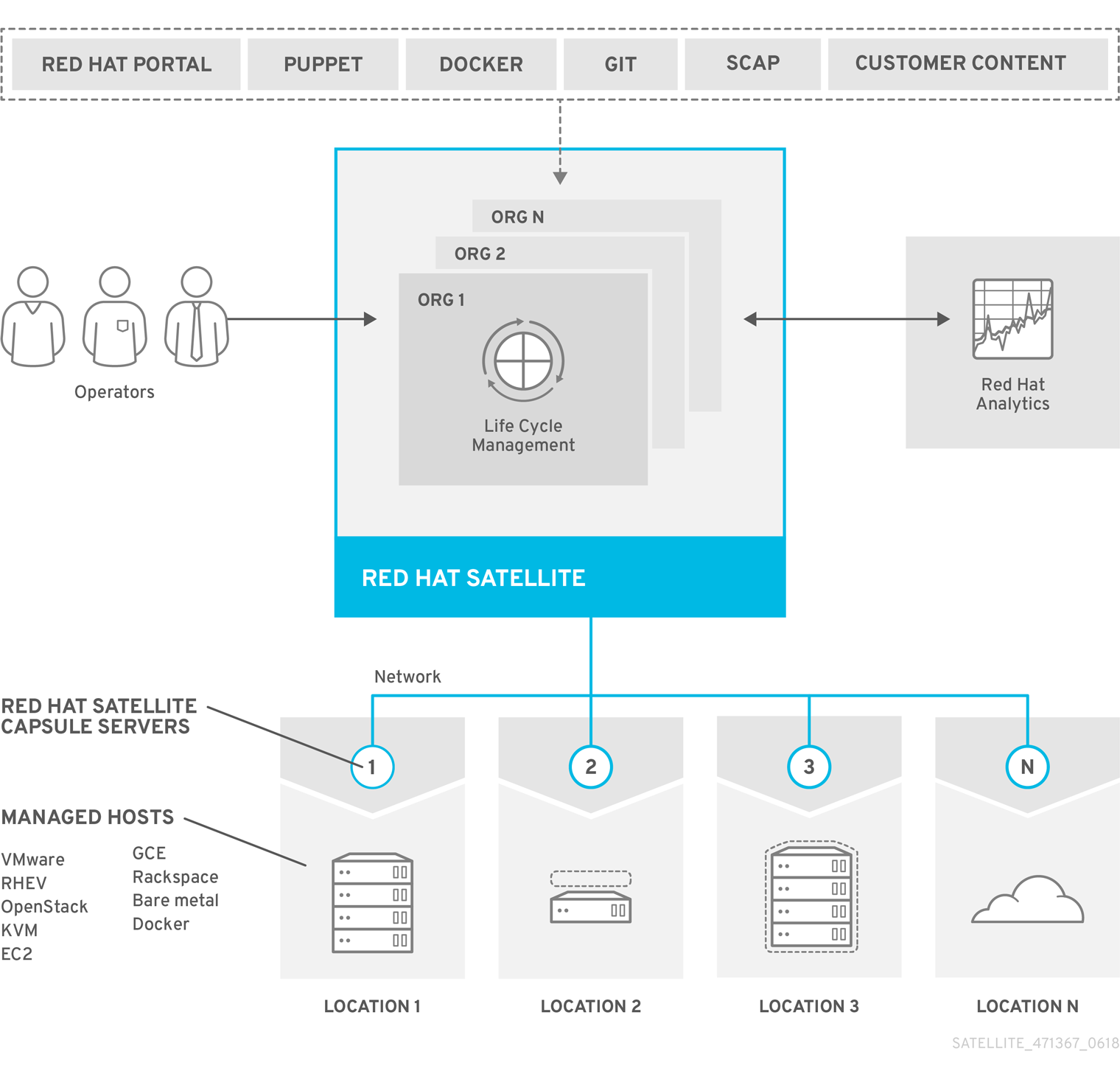Este conteúdo não está disponível no idioma selecionado.
Chapter 3. Organizations, Locations, and Life Cycle Environments
Red Hat Satellite takes a consolidated approach to Organization and Location management. System administrators define multiple Organizations and multiple Locations in a single Satellite Server. For example, a company might have three Organizations (Finance, Marketing, and Sales) across three countries (United States, United Kingdom, and Japan). In this example, the Satellite Server manages all Organizations across all geographical Locations, creating nine distinct contexts for managing systems. In addition, users can define specific locations and nest them to create a hierarchy. For example, Satellite administrators might divide the United States into specific cities, such as Boston, Phoenix, or San Francisco.
Figure 3.1. Example Topology for Red Hat Satellite
The Satellite Server defines all locations and organizations. Each respective Satellite Capsule Server synchronizes content and handles configuration of systems in a different location.
The main Satellite Server retains the management function, while the content and configuration is synchronized between the main Satellite Server and a Satellite Capsule Server assigned to certain locations.
3.1. Organizations
Organizations divide Red Hat Satellite resources into logical groups based on ownership, purpose, content, security level, or other divisions. You can create and manage multiple organizations through Red Hat Satellite, then divide and assign your subscriptions to each individual organization. This provides a method of managing the content of several individual organizations under one management system.
3.2. Locations
Locations divide organizations into logical groups based on geographical location. Each location is created and used by a single account, although each account can manage multiple locations and organizations.
3.3. Life Cycle Environments
Application life cycles are divided into life cycle environments which represent each stage of the application life cycle. Life cycle environments are linked to form an environment path. You can promote content along the environment path to the next life cycle environment when required. For example, if development ends on a particular version of an application, you can promote this version to the testing environment and start development on the next version.
Figure 3.2. An Environment Path Containing Four Environments

